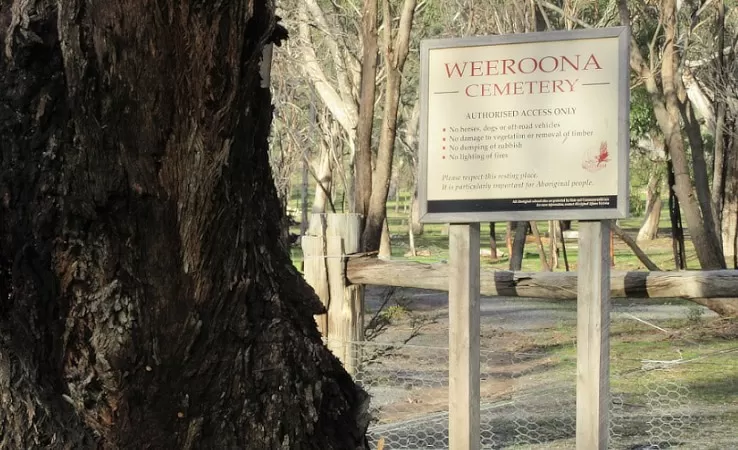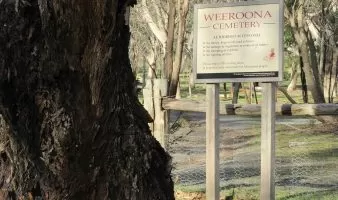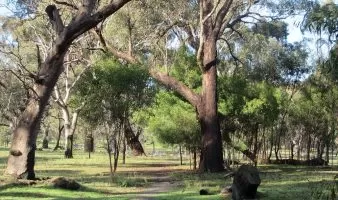When Mitchell gazed out over the land from Mount Macedon, he was not gazing out over vacant space. It was not terra nullius but a land fully occupied by a culture, the absence of which in the national narrative, is now acutely obvious. While we build monuments of European glorification, there are no moments to warriors of the frontier wars. Our national amnesia extends to the realities of colonialism in its broadest sense. There is however, a small sliver of land that provides testament to and resting place for indigenous people in the West.
The Weeroona Aboriginal Cemetery came into existence in 1992, the result of the strenuous efforts over generations of a number of powerful and very determined indigenous women striving to ensure their communities the right to a dignified burial. They gained begrudging recognition from the State Government that ultimately provided this fragment of land.
Among the red gums, grey box and the quiet nonchalance of doe-eyed kangaroos snoozing in the sun, a soft peacefulness reigns here, merging into the landscape. This is the last resting place of many local indigenous people, finally reclaiming a little bit of their own. It is also a resting place for those indigenous people who have died far from their home lands, their families unable to repatriate them, and the unidentified remains of individuals reclaimed from museum collections! Here at least they are all among kin.
Unlike most European cemeteries, there are no rigidly ordered plots. Rather, there are isolated individuals and family groupings. I think it would be incorrect to say they are random but the need for order is clearly not the most important issue here. Some have the whole “kit and caboodle”, rose coloured marble headstones and sarcophagi and some are no more than indentations in the earth, sometimes roughly marked by fallen tree branches, some not marked at all. One needs to take care where one walks. In between the plots, young men from the Koori Programs rake leaves.
The grave statuary, where it exists, is particularly poignant; toy cars, small plastic action figures, plastic flowers (not in funeral vases but common domestic vases of various kinds), football regalia – scarves, hats, sometimes the team slogan carved into wood. Among the graves, here and there are an assortment of seats, sometimes chairs, that have been drawn up and placed to provide a communion with those lost. Death feels domestic here, unfiltered by high flying rhetoric and symbolic power. Saddest are the graves not large enough to be full grown adults; too many. Despite the sadness that accompanies all death, there is a tranquility among the gums that is not evident elsewhere. While I can’t pretend a deep cultural knowledge, I can appreciate the peace and appropriateness of this place.


